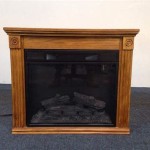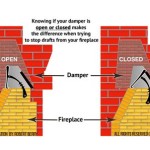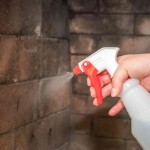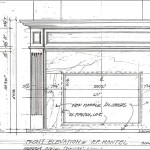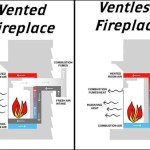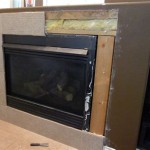Fireplace Ceramic Tile: A Comprehensive Guide
Fireplace ceramic tile offers a durable, aesthetically pleasing, and versatile solution for enhancing the appearance and functionality of a fireplace. Its robustness to heat, ease of maintenance, and diverse design options make it a popular choice for homeowners seeking to update or build a fireplace. This article will delve into the various aspects of fireplace ceramic tile, including types, installation considerations, aesthetic possibilities, and maintenance practices.
Ceramic tile, composed of clay and other natural materials, is fired at high temperatures, resulting in a hardened and durable surface. This process renders the tile resistant to heat, making it suitable for the high-temperature environment surrounding a fireplace. The availability of ceramic tile in a myriad of colors, sizes, patterns, and textures allows for considerable design flexibility, enabling homeowners to achieve a variety of stylistic visions for their fireplaces.
Key Benefits of Using Ceramic Tile for Fireplaces
Ceramic tile presents several advantages when used in fireplace applications. These benefits encompass durability, heat resistance, design versatility, and ease of maintenance. Each attribute contributes to the long-term value and appeal of a tiled fireplace.
Firstly, the inherent durability of ceramic tile makes it a practical choice for areas subjected to wear and tear. Around a fireplace, where logs are handled and ash can accumulate, the scratch-resistant surface of ceramic tile helps maintain its aesthetic appeal over time. Secondly, heat resistance is crucial. Ceramic tile can withstand the high temperatures generated by a fire without cracking, warping, or discoloring, ensuring safety and longevity. This characteristic differentiates it from other materials that may be susceptible to heat damage.
Thirdly, the vast range of design options available in ceramic tile allows homeowners to customize their fireplaces to match their personal style and the overall aesthetic of their living space. From classic subway tiles to intricate mosaic patterns, the possibilities are virtually limitless. Finally, the ease of maintenance is a significant advantage. Ceramic tile is non-porous and resistant to stains, making it easy to clean with simple household cleaners, thus minimizing upkeep efforts.
Types of Ceramic Tile Suitable for Fireplaces
While all ceramic tiles share a common composition, variations in manufacturing processes and materials result in distinct types, each with unique characteristics. Certain types are better suited for fireplace applications than others, primarily due to differences in heat resistance and durability.
One suitable type is porcelain tile, a denser and less porous form of ceramic tile. Porcelain tiles are fired at higher temperatures than standard ceramic tiles, resulting in a stronger and more durable product. Their low water absorption rate makes them highly resistant to stains and moisture damage, further enhancing their longevity in the demanding environment of a fireplace surround. Porcelain tiles are a premium choice for fireplace applications, offering superior performance and aesthetic appeal.
Another option is quarry tile, which is made from natural clay and is known for its durability and rustic appearance. Quarry tiles are often unglazed, providing a natural texture and slip resistance, although they are less resistant to staining than porcelain. Though typically used for flooring, quarry tiles can be an attractive and functional choice for fireplace hearths and surrounds, lending a rustic, earthy aesthetic.
Standard ceramic tile, while a cost-effective option, may not always be the best choice for areas directly exposed to intense heat. If choosing standard ceramic tile, selecting tiles with a high PEI (Porcelain Enamel Institute) rating, which indicates resistance to abrasion and scratching, remains crucial. Also, ensure the mortar and grout used are heat-resistant formulations to withstand the temperature fluctuations near the firebox.
Finally, consider the thickness of the tile. Thicker tiles generally provide better heat resistance and structural integrity. Opting for thicker tiles can provide an extra margin of safety and durability, especially in high-heat areas directly surrounding the firebox.
Installation Considerations for Fireplace Ceramic Tile
Proper installation is crucial for maximizing the performance and longevity of ceramic tile in a fireplace setting. This process involves careful surface preparation, selection of appropriate adhesives and grout, and precise tile placement. Neglecting any of these steps can compromise the integrity of the tiled surface and potentially lead to safety hazards.
Effective surface preparation is the foundation of a successful tile installation. The underlying surface must be clean, dry, and structurally sound. Any existing paint, wallpaper, or loose debris should be removed. If the fireplace surround is constructed of brick or concrete, ensure that it is level and free from cracks. A concrete board, also known as cement backer board, is often recommended as a substrate for tile installation, as it provides a stable and moisture-resistant surface. This board is attached securely to the fireplace surround, creating an ideal foundation for the tile.
Selecting the right adhesive and grout is equally important. Heat-resistant thin-set mortar is specifically formulated to withstand the high temperatures generated by a fireplace. This type of mortar maintains its bond strength even under extreme heat, preventing tiles from cracking or detaching. Similarly, heat-resistant grout is essential for filling the gaps between tiles and creating a seamless, water-resistant surface. Epoxy grout is a strong and durable option, known for its resistance to stains and chemical damage, but may require more professional expertise during application.
Tile layout and placement require careful planning and execution. Begin by determining the desired tile pattern and calculating the necessary number of tiles. Start tiling from the center outwards, ensuring that the tiles are evenly spaced and aligned. Use tile spacers to maintain consistent grout lines. Cut tiles as needed using a wet saw to fit around corners and edges. After the mortar has cured, apply the grout, working it into the joints with a grout float. Remove excess grout with a damp sponge and allow it to dry completely before sealing.
Sealing the grout lines is a final, but important step, in the installation process. Grout sealer helps to protect the grout from stains and moisture, making it easier to clean and maintain. Apply a high-quality grout sealer according to the manufacturer's instructions. Regular reapplication of the sealer may be necessary over time to maintain its effectiveness.
Aesthetic Considerations and Design Options
Ceramic tile offers a wide array of design possibilities for fireplaces, allowing homeowners to create a focal point that complements their personal style and the overall aesthetic of their living space. From classic to contemporary, rustic to modern, the options are virtually limitless.
Color plays a significant role in the overall look and feel of a tiled fireplace. Neutral colors, such as white, beige, and gray, offer a timeless and versatile option that blends seamlessly with various interior styles. These colors create a clean and sophisticated look that can enhance the sense of space and light. Brighter colors, such as blues, greens, and reds, can add a pop of personality and create a more vibrant and eye-catching focal point. Consider the existing color palette of the room and choose tiles that complement or contrast with it to create a harmonious balance.
Tile patterns can add visual interest and texture to a fireplace surround. Subway tiles, arranged in a traditional horizontal pattern, offer a classic and timeless look that is both elegant and understated. Herringbone patterns, where tiles are arranged in a V-shape, add a touch of sophistication and visual intrigue. Mosaic tiles, consisting of small pieces of tile arranged in intricate patterns, can create a stunning and artistic focal point. Experiment with different patterns to find one that suits your personal style and the overall design of your living space.
Texture is another important factor to consider. Textured tiles can add depth and dimension to a fireplace surround, creating a more tactile and visually appealing surface. Natural stone-look tiles, with their subtle variations in color and texture, can evoke a sense of warmth and authenticity. Three-dimensional tiles, with raised or recessed patterns, can create a dramatic and eye-catching effect. Consider the overall style of your living space and choose textures that complement and enhance it.
Tile size also impacts the overall aesthetic. Larger tiles create a cleaner, more modern look with fewer grout lines, while smaller tiles can add detail and visual complexity. Mixing different sizes and shapes of tiles can also create a unique and personalized design.
Maintenance and Care of Fireplace Ceramic Tile
Proper maintenance is essential for preserving the beauty and longevity of fireplace ceramic tile. Regular cleaning and care can help to prevent stains, grime, and other forms of damage, ensuring that your fireplace remains a stunning focal point for years to come.
Regular cleaning is the key to preventing the buildup of dirt, ash, and soot on the tiled surface. Sweep or vacuum the fireplace surround regularly to remove loose debris. Wipe down the tiles with a damp cloth or sponge to remove surface dirt. For more stubborn stains, use a mild detergent or ceramic tile cleaner. Avoid using harsh chemicals or abrasive cleaners, as they can damage the tile surface and grout lines.
Grout lines are particularly susceptible to staining, so it's important to clean them regularly. Use a grout brush and a grout cleaner to scrub away dirt and grime. For heavily stained grout, you may need to use a bleach-based cleaner, but be sure to test it in an inconspicuous area first to ensure that it doesn't damage the grout. Consider using a grout sealer to further protect and prevent stains.
Addressing cracks or chips promptly is important to prevent further damage. If you notice any cracks or chips in the tiles, repair them as soon as possible. Small cracks can be filled with epoxy filler, while larger cracks may require the replacement of the damaged tile. Consult with a professional tile installer for assistance with more complex repairs.
Preventative measures can also help to minimize the need for extensive cleaning and repairs. Use a fireplace screen to prevent sparks and embers from damaging the tiled surface. Avoid placing flammable materials too close to the fireplace. Regularly inspect the chimney and fireplace for signs of damage or deterioration. Following these preventative measures can proactively preserve the beauty and integrity of the fireplace tile.

Heritage Pattern Fireplace Pewabic Pottery

How To Paint Fireplace Tile Easy Home Update Allisa Jacobs

Hottest Fireplace Trend Tile Flooring
:strip_icc()/fultz_reaford_project_21-3f8d725c849c421a8993fa802620f16a.jpeg?strip=all)
25 Stunning Fireplace Tile Ideas To Inspire Your Space

How To Tile A Fireplace My Uncommon Slice Of Suburbia
Fireplace Tile Surround 5 Decorative Mantel Tiles 2024

14 Fresh Designs For Tiled Fireplaces Bob Vila

Fireplace Tile Installations Heath Ceramics
:strip_icc()/MindyGayerDesignCo.-Windward-VanessaLentine1-0a2720b93f0f4e1d9bef4d9d4e9e2228-39d378ec32254f58bc1730cbc9188ba8.jpg?strip=all)
25 Stunning Fireplace Tile Ideas To Inspire Your Space

Planning A Tile Fireplace Budgeting Design Diy Vs Pro
Related Posts

